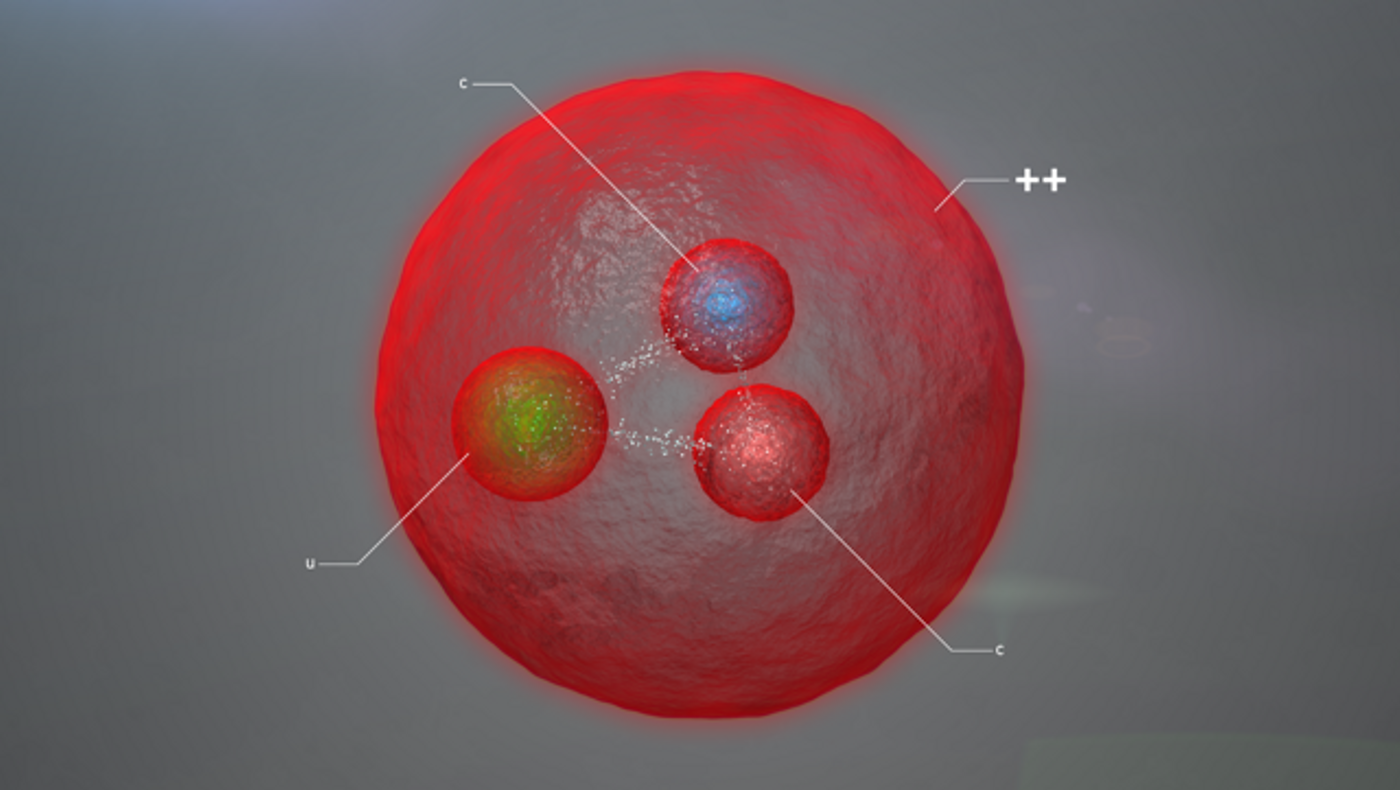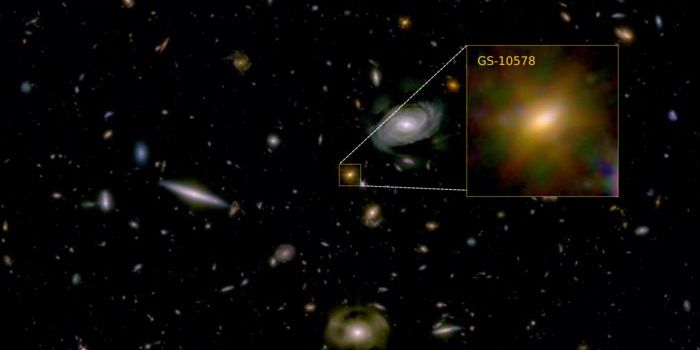The Discovery of Xi-cc an Exotic and Charming Particle
On July 6, a team of researchers from the European Organization for Nuclear Research (CERN) announced that they confirmed the observation of a theoretically predicted particle called Xi-cc (the "Xi" is pronounced "ksi"). The newly discovered particle has a mass 3,621 MeV (million electron volts), almost four times the mass of a proton (938 MeV). This heavy particle is made of two charm quarks and an up quark. As comparison, a proton is made of two up quarks and a down quark. The observation of Xi-cc was made possible thanks to the high production rate of heavy quarks at the Large Hadron Collider (LHC) and the unique capabilities of the LHCb experiment (a collaboration dedicated for studies on matter-antimatter asymmetry), which identify the disintegration of protons with excellent efficiency.
Envisioned image of the Xi-cc particle, made of two charm quarks and one up quark. Credit: CERN
The Xi-cc particle is a type of baryon. According to the standard model of physics, a baryon is a particle composed of three quarks or a triquark. The name "baryon" comes from the Greek word for "heavy", since at the time of naming most known elementary particles are lighter in masses. The baryons that most of us familiar with are protons and neutrons, which make up everyday matter.
Standard Model of Elementary Particles. Credit: Wikipedia
In the standard model, there are six types of quarks, and a random mix of three that involves at least one charm quark can theoretically form a great variety of baryons. The baryons observed in previous experiments contain only one heavy quark. The discovery of Xi-cc confirmed for the first time that baryons with two heavy quarks exists for real. Therefore, the Xi-cc is also dubbed a “doubly charmed” particle.
Related: the standard model of physics
According to Giovanni Passaleva the spokesperson of the LHCb team, “finding a doubly heavy-quark baryon is of great interest as it will provide a unique tool to further probe quantum chromodynamics, the theory that describes the strong interaction, one of the four fundamental forces. Such particles will thus help us improve the predictive power of our theories.”
Scientist had long predicted the existence of Xi-cc but without clear idea of its mass. Some physicists such as Jonathan Rosner, an emeritus professor from the University of Chicago had predicted a theoretical mass for the Xi that is close to the CERN team discovery. An earlier experiment at Fermi National Accelerator Laboratory caught a glimpse of Xi-cc back in 2002, but the data estimated a mass that was 100 MeV lower. The results from LHCb confirmed the prediction was correct, which also acts as a confirmation of the standard model.
What is the dynamics inside the Xi-cc particle like? Physicists suggest we should look up the sky for answer. "In contrast to other baryons, in which the three quarks perform an elaborate dance around each other, a doubly heavy baryon is expected to act like a planetary system, where the two heavy quarks play the role of heavy stars orbiting one around the other, with the lighter quark orbiting around this binary system," explained Guy Wilkinson, a former spokesperson for LHCb.
The LHCb Experiment Credit: CERN
Source: CERN/Live Science










